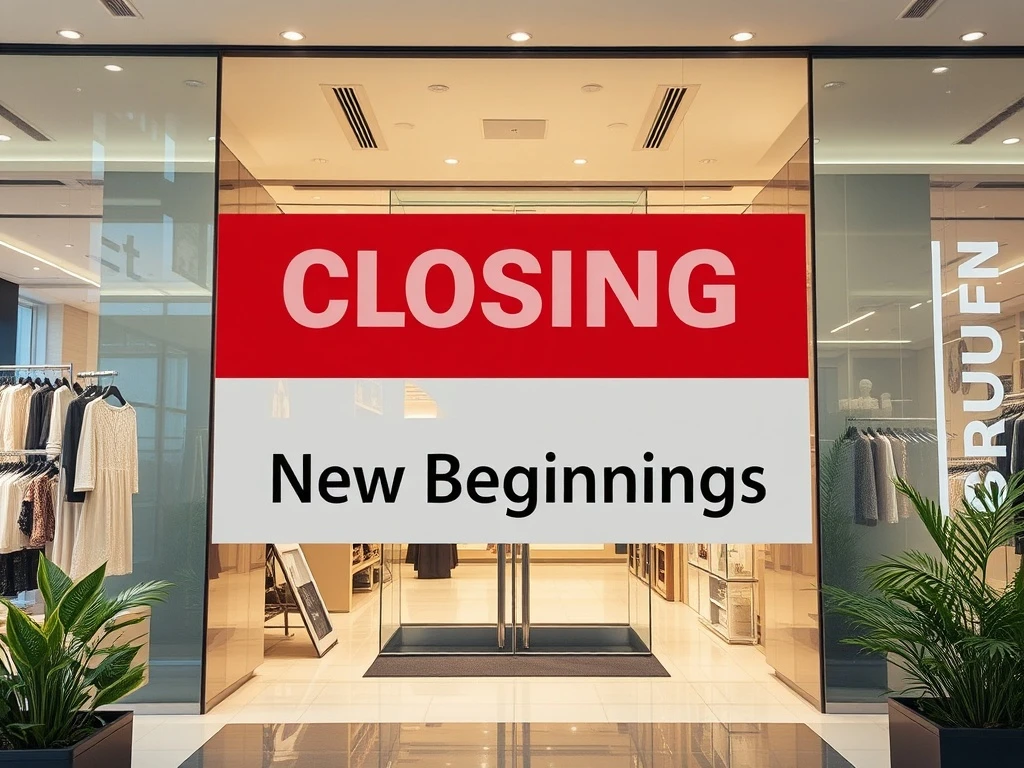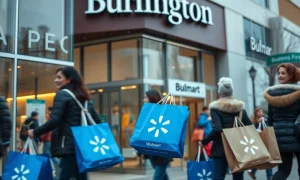The retail landscape is currently undergoing a dramatic transformation. Recently, a beloved classic 80s/90s fashion retailer announced the closure of 500 stores. This significant decision, therefore, underscores a broader industry trend. Many established brands now face immense pressure. These retail store closures signal a challenging era for the entire sector. Consequently, this affects not only the company but also its employees and loyal customers. Understanding these developments is crucial.
For decades, this particular retailer was a prominent fixture. It helped define style for a generation. Its vibrant stores offered a unique, in-person shopping experience. However, economic headwinds now force difficult choices. The brand must adapt or face further challenges. Thus, examining the underlying factors behind these closures becomes essential. This analysis offers insights into the evolving market.
Understanding the Wave of Retail Store Closures
The current wave of retail store closures is certainly not an isolated phenomenon. Several powerful forces actively reshape the entire industry. Digital transformation, for instance, plays a major role. E-commerce platforms now offer unparalleled convenience to consumers. Shoppers expect immediate access and a seamless buying process. This shift, moreover, profoundly impacts traditional brick-and-mortar stores.
Online shopping habits grew rapidly over the past decade. Consumers browse and buy products directly from their homes. They often find competitive prices and wider selections online. This trend directly reduces physical store foot traffic. Many brick-and-mortar locations, consequently, struggle to maintain profitability. Therefore, closures become an inevitable outcome for some retailers.
Consumer preferences have also significantly evolved. Younger generations, in particular, prioritize sustainability and ethical practices. They also seek unique, personalized shopping experiences. Fast fashion cycles often conflict with these emerging values. Brands must adapt their offerings quickly. Otherwise, they risk losing substantial market share. This pressure, ultimately, contributes directly to the increasing number of retail store closures.
The Legacy of 80s/90s Fashion Retail
The 1980s and 1990s represented a vibrant era for fashion retail. Brands like the one in question thrived in bustling shopping malls. They offered distinct styles and cultural relevance. This particular brand successfully captured that era’s spirit. It built a remarkably loyal customer base. Its stores were often seen as social hubs, places to gather and discover new trends.
However, nostalgia alone cannot sustain a modern business. The entire retail environment changed fundamentally. Maintaining large physical footprints became incredibly expensive. Operational costs, including rent and utilities, increased steadily. The brand, furthermore, struggled to modernize its appeal effectively. Its traditional model simply faced new market realities. This inability to pivot quickly proved costly.
Economic Pressures Driving Retail Store Closures
Beyond digital shifts, broader economic factors exert immense pressure on retailers. Inflation, for example, significantly impacts operating costs. Rent, utilities, and labor expenses continue to rise. These increases, consequently, squeeze profit margins across the board. Retailers must either absorb these higher costs or pass them directly to consumers. Both options present considerable challenges.
Supply chain disruptions also add significant complexity. Sourcing materials became more challenging and less predictable. Transportation costs, moreover, escalated sharply in recent years. Furthermore, finding and retaining qualified staff remains difficult. Labor shortages persist in many regions. Higher wages are often necessary to attract talent. These factors collectively contribute to widespread retail store closures.
Competition within the retail sector remains exceptionally fierce. New direct-to-consumer (DTC) brands emerge constantly. These brands often operate with lower overheads. Large discount retailers, in addition, compete aggressively on price. These dynamic market conditions make survival tough for established players. Brands must innovate continuously or face a gradual decline.
Adapting to a New Retail Landscape
Successful retailers actively adopt new strategies for growth. They embrace comprehensive omnichannel approaches. This involves seamlessly integrating online and offline experiences. Customers can, for example, buy items online and pick them up in-store. They can also return purchases easily across channels. Experiential retail, furthermore, gains considerable traction. Stores transform into destinations offering unique brand interactions, not just shops.
The retailer undergoing closures likely faced specific challenges. It may have been slow to innovate its business model. Its digital presence, perhaps, lagged behind competitors. Perhaps its product offerings did not evolve with consumer tastes. Many legacy brands struggle with outdated systems. These systems can hinder agile responses to market changes. Consequently, significant retail store closures often result from such difficulties.
The Future of Fashion Retail Amidst Store Closures
Despite the current challenges, the fashion retail sector continues to evolve. It actively adapts to new consumer behaviors and technological advancements. Physical stores, certainly, will not disappear entirely. Instead, their fundamental purpose will transform. They will offer more curated and unique brand experiences. Technology, moreover, will enhance these interactions, making them more engaging.
New business models are steadily emerging. Subscription services, for example, offer curated fashion selections. Resale platforms actively promote circularity and sustainability. Pop-up shops provide flexibility and novelty. These innovations actively reshape the market landscape. They offer valuable glimpses into retail’s future direction. The industry, therefore, remains incredibly dynamic.
This period of significant change also presents opportunities. Brands can strategically rethink their core operations. They can focus on lucrative niche markets. They can also leverage advanced data analytics. Understanding precise customer needs is paramount for success. Ultimately, agility and continuous innovation are key factors. These elements will determine which brands thrive.
The announcement of 500 retail store closures by a classic fashion retailer is truly significant. It highlights the profound shifts occurring within the retail industry. Economic pressures, digital disruption, and changing consumer habits all play a crucial part. While challenging, this evolution also actively fosters innovation. The future of fashion retail will undoubtedly be different. It will likely be more integrated, sustainable, and experience-driven. Brands must adapt proactively to thrive in this new era.
Frequently Asked Questions (FAQs)
- Why are so many retail stores closing?
Numerous factors contribute to retail store closures, including the rise of e-commerce, shifting consumer preferences towards online shopping and experiential retail, increased operating costs (rent, labor, supply chain), and intense competition from direct-to-consumer brands and discount retailers. - What impact do retail store closures have on the economy?
Retail store closures can lead to job losses, decreased local tax revenue, and vacant commercial properties. They can also signal broader economic shifts, such as changes in consumer spending habits or a slowdown in economic growth. However, new online jobs and different retail models may emerge. - How can traditional retailers compete with online stores?
Traditional retailers can compete by adopting an omnichannel strategy, integrating online and in-store experiences. They can also focus on creating unique in-store experiences, offering personalized customer service, leveraging technology for efficiency, and building strong brand communities. - Will physical stores disappear entirely?
No, physical stores are unlikely to disappear entirely. Their role is evolving. Future physical stores will likely focus more on brand experience, product discovery, and community building, rather than just transaction processing. They will complement, rather than simply compete with, online channels. - What does this mean for consumers who loved the brand?
For consumers, these closures mean fewer physical locations to shop at. The brand might shift its focus entirely online, or it could potentially cease operations altogether. This often prompts consumers to seek out alternative brands or embrace second-hand markets for nostalgic items.


















